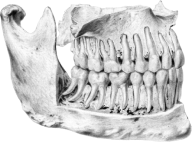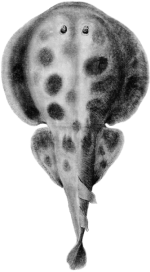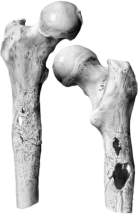
John Hunter (1728–1793) by Sir Joshua Reynolds, 1786
John Hunter
John Hunter was born in 1728 at Long Calderwood, a farm eight miles south of Glasgow, in Scotland. In 1748 at the age of 20 he moved to London to work as an assistant in the anatomy school of his elder brother William (1718-1783). Under William's direction, John learnt human anatomy and showed great skill in dissection and preparing specimens. William also arranged for him to study surgery under the leading surgeons William Cheselden (1688-1752) and Percivall Pott (1714-1788)
In 1760 Hunter was commissioned as an army surgeon and spent three years in France and Portugal. As well as developing new ideas on the treatment of common ailments - such as gunshot wounds and venereal disease - Hunter spent time collecting specimens of lizards and other animals. On his return to England in 1763 he began to build up his private practice as a surgeon. His scientific work was rewarded in 1767 when he was elected a Fellow of the Royal Society. In 1768 he was elected Surgeon to St George's Hospital, and in 1783 he moved to a large house in Leicester Square, where he was able to arrange his collection into a teaching museum.
When not treating patients Hunter devoted most of his time and money to building his museum collection to use for research and for teaching medical students. As his reputation grew he was supplied with rare specimens from around the world, such as kangaroos brought from Australia by Sir Joseph Banks from James Cook’s voyage of 1768-71. At his death in 1793 Hunter’s museum included nearly 14,000 specimens of more than 500 different species of plants and animals. Hunter’s methods for acquiring some of the bodies and body parts for his museum, although not illegal in his time, were ruthless and paid little regard for the dead. Most notoriously he acquired the body of Charles Byrne, known as the Irish Giant, despite Byrne’s reported fear of having his body dissected by anatomists after his death.
While most other surgeons of Hunter’s time taught only human anatomy, Hunter's lectures focused on comparative anatomy, the relationship between the structure and function in all living creatures. The study of comparative anatomy was to later develop into the field of evolutionary biology. Hunter believed that surgeons should understand how the body adapts to and compensates for damage due to injury, disease or environmental changes. He encouraged his students to carry out experimental research and to apply the knowledge they gained to the treatment of their patients. Following this ‘Hunterian method’ many of his students, such as Edward Jenner a pioneer of vaccination, went on to make significant contributions to medical practice in their own right.
By the late 1780s Hunter was widely recognised as the leading surgeon of his time. He was appointed as King George III’s ‘sergeant’ surgeon and Inspector of Hospitals for the British Forces. However, his blunt-speaking and argumentative nature did not endear him to other established surgeons who were resistant to the changes he introduced in teaching and training apprentice surgeons. Hunter died on the 16th October 1793 following an angina attack, brought on during an argument with his fellow surgeons, about access to surgical training at St George's Hospital.
Hunter made several important contributions to surgical practice and promoted evidence based medicine through close observation and experimentation to inform surgical practice.
His collection is a unique record of the breadth of interest in the nature of living things explored by scientists throughout Europe during the 1700s.

John Hunter (1728–1793) attributed to Johan Zoffany, 1765–85
William Hunter
William Hunter was John's older brother, born in 1718 at Long Calderwood, a farm eight miles south of Glasgow in Scotland. He matriculated at Glasgow University in 1731 studying under the famed Scottish physician William Cullen (1710-1790). He also studied medicine at Edinburgh University where he was taught by Scotland’s leading anatomist Alexander Monro primus. In 1741 he moved to London to train under the leading anatomist and obstetrician, and fellow Scot, James Douglas.
Within ten years William Hunter was established as a favorite physician and obstetrician to the wealthy, including Queen Charlotte and other members of the Royal Family. He had also gained a reputation as England’s leading teacher of anatomy, amassing a famed collection of anatomical and pathological specimens at his first anatomy school at Covent Garden.
In 1768 he opened a medical school at his house in Great Windmill Street. As his reputation - and wealth - grew, William Hunter also collected works of art as well as coins, books, manuscripts and curiosities. After his death in 1783 William Hunter bequeathed his entire collection to Glasgow University, where it formed the basis of The Hunterian at the University of Glasgow, which opened in 1807.

William Hunter (1718–1783) by Robert Edge Pine, 1760s






